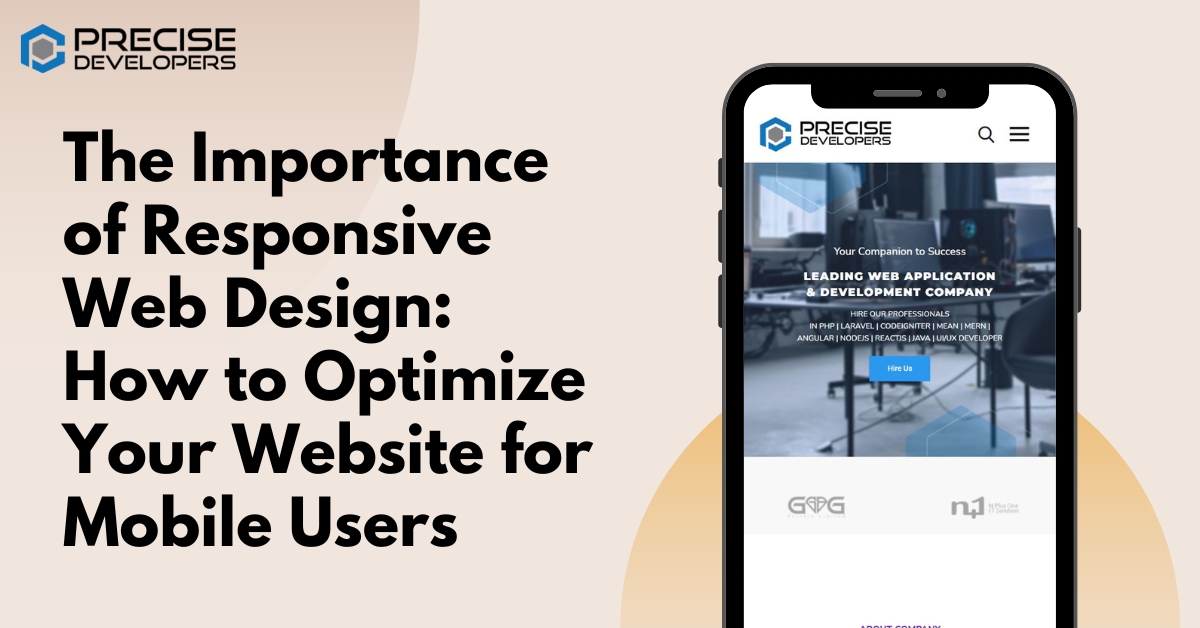The Importance of Responsive Web Design: How to Optimize Your Website for Mobile Users
Responsive web design is the practice of designing and developing websites that adapt to the different screen sizes and resolutions of different devices, such as smartphones, tablets, and desktop computers. With more and more users accessing the internet on their mobile devices, it has become increasingly important for web developers to optimize their websites for mobile users.
The importance of responsive web design can be attributed to the following reasons:
- Mobile-first indexing: Google now indexes the mobile version of a website as the primary version, which means that websites that are not optimized for mobile devices may be penalized in search engine rankings.
- User experience: A responsive website provides a better user experience for mobile users, as they can easily navigate the site and access its content without having to zoom or scroll horizontally.
- Cost-effective: Developing a separate mobile website can be time-consuming and costly. Responsive web design allows developers to create a single website that can be accessed on multiple devices, saving time and resources.
- Increased conversion rates: A responsive website can increase conversion rates as it makes it easy for mobile users to access and engage with the website, leading to more sales or leads.
In today’s digital age, it’s essential for businesses to have a strong online presence. With the majority of internet users accessing the web on their mobile devices, it’s more important than ever for businesses to ensure that their websites are optimized for mobile users. Responsive web design is a technique that allows a website to adapt to the different screen sizes and resolutions of various devices, providing a seamless user experience across different devices.
The benefits of responsive web design are numerous, including improved search engine rankings, increased conversion rates, and enhanced user experience. Google now indexes the mobile version of a website as the primary version, which means that websites that are not optimized for mobile devices may be penalized in search engine rankings. A responsive website provides a better user experience for mobile users, as they can easily navigate the site and access its content without having to zoom or scroll horizontally. This can lead to increased conversion rates as it makes it easy for mobile users to access and engage with the website, leading to more sales or leads.
Additionally, responsive web design is cost-effective as it allows developers to create a single website that can be accessed on multiple devices, saving time and resources. It eliminates the need to maintain separate mobile and desktop websites. This is especially important for small and medium-sized businesses that may not have the resources to maintain separate mobile and desktop websites.
To optimize your website for mobile users, here are some best practices for responsive web design:
- Use a flexible grid layout: This allows the website to adapt to different screen sizes and resolutions. It’s important to ensure that the layout of the website is flexible and adapts to the screen size of the device.
- Use readable fonts and larger buttons: This makes it easier for mobile users to read and interact with the website. It’s important to ensure that the font size is large enough to be easily readable on smaller screens and that buttons are large enough for mobile users to easily tap.
- Optimize images for mobile devices: This ensures that images load quickly and don’t take up too much of the mobile device’s memory. Optimizing images for mobile devices is crucial as it can help to speed up the loading time of the website.
- Use media queries: This allows developers to apply different CSS styles based on the screen size and resolution of the device. Media queries are a powerful tool that allows developers to create different styles for different devices.
- Test your website on different devices: This will help you identify and fix any issues that may arise on different devices. It’s important to test your website on a variety of devices to ensure that it functions correctly on all devices.
Responsive web design is no longer an option, it’s a necessity. With mobile usage continuing to grow, it’s important to make sure that your website is ready to meet the needs of mobile users. By following these best practices, you can ensure that your website is fully optimized for mobile users and provides a seamless user experience across different devices. This will help to increase your online visibility, improve user engagement and ultimately drive more business for your organization.
Checkout Our Recent Post:
- The Fundamentals of Vulnerability Assessment and Penetration Testing
- Angular 15.1.0 and its features
- Web Development: Learn, Practice, and succeed without a degree
- Generative AI: A threat or assurance?
- Mastering the Essential Soft Skills for Software Developers
If you like this post then you may also like to share the same with your colleagues. Let us know your thoughts on our blogs and on social media posts on Instagram, Facebook, LinkedIn, and Twitter.

